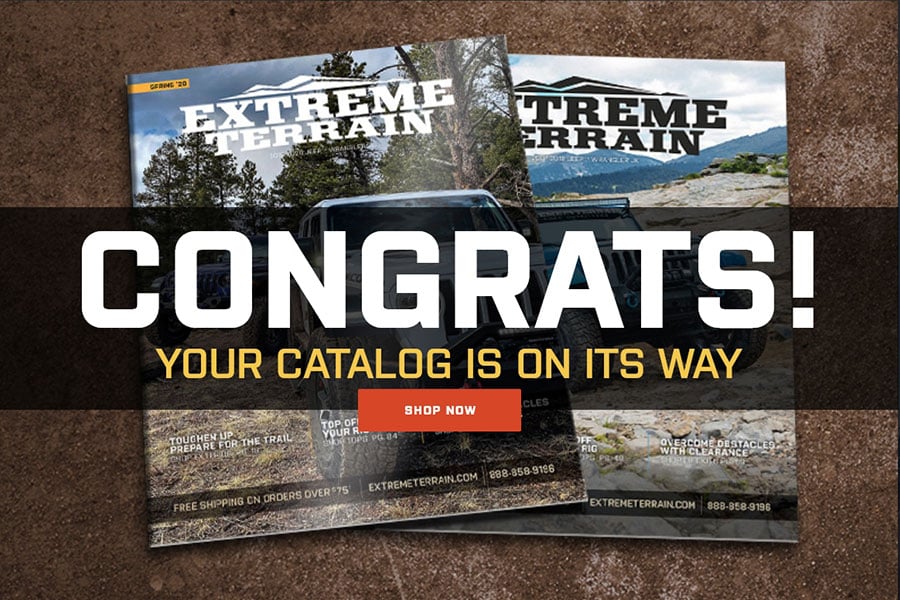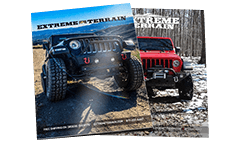

Vehicle Identification Number VIN Decoder 2007-2016 Jeep Wrangler JK
VIN DECODER 2007-2017 JEEP WRANGLER JK
While often compared to the fingerprint—as in no two are alike—the Vehicle Identification Number, or VIN, is really more like the fully mapped DNA sequence of your Jeep Wrangler JK. From this seemingly meaningless set of alphanumeric digits, you can learn everything there is to know about your Jeep, from the engine type to the transmission it employs. You can even learn exactly where it was manufactured and what the gross vehicle weight was when it came off the factory line.
Why is this important? You may not have noticed, but each modern VIN (any vehicle made after 1981) contains exactly 17 characters, with the last six being your Jeep’s individual manufacture number. It is absolutely impossible for two vehicles to share the same VIN. If you are a collector, or simply enjoy the purity of keeping your vehicles as original as possible, this is hugely beneficial because the VIN will tell you the main vehicle attributes of your Jeep, such as the engine type and the transmission. This will aid greatly in discerning the value of your new toys or help you identify the correct parts for your rebuild. Another important benefit of the VIN is that it can be used to alert you when there has been a recall with parts used in your Jeep; trust us, the last thing you want when crawling a fifty-degree incline is a rig with faulty parts.
Needless to say, when you really want to get to the bottom of what sort of off-roader you’re getting into, the VIN is going to be your lifeline to the truth. This is especially useful when that pushy dealer is trying to pass off a 4.0 straight six as a 4.7 V8. Bottom line: people may lie, but the VIN is always going to tell you the truth.
POSITION |
INTERPRETATION |
CODE=DESCRIPTION |
|---|---|---|
| 1 | Country of Origin | 1 = United States |
| 2 | Make | J = Jeep |
| 3 | Vehicle Type | 4 = Multipurpose Pass. Veh. Less Side Air Bags 8 = Multipurpose Pass. Veh. With Side Air Bags |
| 4 | Gross Vehicle Weight Rating | 1 = 8001-9000 lbs. GVWR A = 4001-5000 lbs. GVWR B = 5001-6000 lbs. GVWR C = 6001-7000 lbs. GVWR D = 7001-8000 lbs. GVWR E = 8001-9000 lbs. GVWR G = 4001-5000 lbs. GVWR H = 5001-6000 lbs. GVWR J = 6001-7000 lbs. GVWR K = 7001-8000 lbs. GVWR L = 8001-9000 lbs. GVWR N = 4001-5000 lbs. GVWR P = 5001-6000 lbs. GVWR R = 6001-7000 lbs. GVWR S = 7001-8000 lbs. GVWR T = 8001-9000 lbs. GVWR V = 4001-5000 lbs. GVWR X = 5001-6000 lbs. GVWR Y = 6001-7000 lbs. GVWR Z = 7001-8000 lbs. GVWR |
| 5 | Vehicle Line | A = Wrangler Left Hand Drive (4x4) B = Wrangler Left Hand Drive (4x2) E = Wrangler Right Hand Drive (4x4) Build up for Export Z = Wrangler Right Hand Drive (4x4) US & Canada |
| 6 | Series/Transmission | 2 = L (Low Line) Wrangler Sport or base 3 = M (Medium) Wrangler Unl. or Unl. Sport 5 = P (Premium) Wrangler Sahara or Wrangler Sahara Unlimited 6 = S (Sport) Wrangler Rubicon or Wrangler Rubicon Extended B = 4 Speed Automatic VLP - Sales Code (DGV) C = 6 Speed Manual - Sales Code (DEH) E = 5 Speed Automatic - Sales Code (DGQ) |
| 7 | Body Style | 4 = Open Body (JK 72) 9 = Extended Open Body (JK 74) D = Open Body (JK 72) H = Extended Open Body (JK 74) |
| 8 | Engine | 1 = 3.8L V-6 CYL Gasoline Non-Turbo (EGT) 5 = 2.8L 4 Cylinder Diesel 9 = 2.8L I4 CYL Turbo Diesel Next Gen (ENS) |
| 9 | Check Digit | 0 through 9 or X |
| 10 | Model Year | 7 = 2007 8 = 2008 9 = 2009 A = 2010 B = 2011 C = 2012 D = 2013 E = 2014 F = 2015 G = 2016 |
| 11 | Assembly Plant | L = Toledo, Ohio South Assembly |
| 12-17 | Sequential Serial Number | Six Digit Number |
THIS JEEP WRANGLER VIN DECODER TABLE COVERS THESE WRANGLER MODEL YEARS:
- 2007 Jeep Wrangler JK
- 2008 Jeep Wrangler JK
- 2009 Jeep Wrangler JK
- 2010 Jeep Wrangler JK
- 2011 Jeep Wrangler JK
- 2012 Jeep Wrangler JK
- 2013 Jeep Wrangler JK
- 2014 Jeep Wrangler JK
- 2015 Jeep Wrangler JK
- 2016 Jeep Wrangler JK
JEEP WRANGLER SALES FIGURES (US AND CANADA)
- 2007 Jeep Wrangler: 129,077 units
- 2008 Jeep Wrangler: 96,752 units
- 2009 Jeep Wrangler: 89,315 units
- 2010 Jeep Wrangler: 105,372 units
- 2011 Jeep Wrangler: 138,096 units
- 2012 Jeep Wrangler: 160,665 units
- 2013 Jeep Wrangler: 174,080 units
- 2014 Jeep Wrangler: 234,579 units
- 2015 Jeep Wrangler: 255,283 units
- 2016 Jeep Wrangler: 210,275 units

